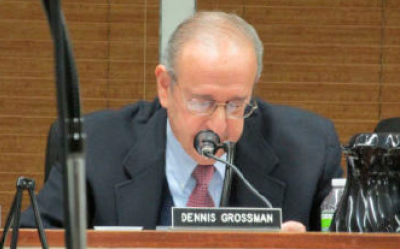The Village of Great Neck Zoning Board of Appeals found a move by Gan Israel Center to a new synagogue at 778 Middle Neck Road would not have a negative environmental impact during a hearing last week.
But the board directed Gan Israel to restrict the center’s hours of operation and the number of people who could use the center at one time.
“I think this is a positive thing for the community. I also feel that I don’t want to have it go to the extent, and we have made mistakes in the past, and approve more than is beneficial to the community,” said board chair Dennis Grossman.
Residents and board members expressed concerns over the flow of traffic, pedestrian safety, parking accessibility on Middle Neck Road, size and hours of operation of the congregation.
Attorney Paul Bloom, who represents Gan Israel, assured residents and the board that the building would be empty by 10 p.m. and provide sufficient parking.
But his assurances were met with skepticism.
Zoning board member Victor Habib said Congregation Torah Ohr at 575 Middle Neck Road had made similar assurances before the congregation ballooned in size and started causing traffic jams.
When Bloom asked why Congregation Torah Ohr’s application was granted, Habib said, “We granted it for the simple reason that we really didn’t have any experience. If I would have known, my vote would have been against it, knowing what I know now – that you cannot park five or six blocks north or south of Torah Ohr in the evening.”
Bloom said Torrah Ohr’s location is four or five times the size of the building Gan Israel is moving into, so the Gan Israel congregation would not have the same impact at its new Middle Neck Road location.
If the congregation did begin to grow, he said, it would need to move to a larger facility.
During the three-hour hearing, the head Gan Israel, Rabbi Yitzchok Chayempour, said approximately 25 people currently attend Shabbat services at Chayempour’s house – their current location. The number, he said, doesn’t include women or children because they don’t have enough room to accommodate them.
Bloom estimated that at the new location there would be there a maximum of 75 people attending Shabbat, up to 141 on the high holy days and no more than 20 people attending daily services and activities like study groups and counseling.
After 25 minutes of private deliberation, the board called for Gan Israel to cap the number of occupants in the building at 80. After Bloom briefly conferred with Chayempour, they agreed with the board to place a cap at 85 people and end all activities by 10 p.m.
“I know people who live on Steamboat who can’t even get out of their driveway,” she said.
“The question of inadequate parking, to me that is the biggest issue,” said board member Steve Markowitz.
After lengthy debate over the merits of the various independent traffic studies and talk about congestion in the evenings on Middle Neck Road, Bloom said that in addition to street parking, the congregation was adding six on-site parking spaces. He said there is also a large municipal lot next door to the building where people could park and not worry about crossing the busy street to get to the building.
He also said that the building sits at a signaled intersection providing a safe situation for pedestrians.
At the end of his presentation, board member Tedi Kashi said, “The answer to this point completely satisfied me.”
The board also called for revisions to the interior plans of the building. These amounted to adding more doors in the front and back of the building as well as moving a wall to allow for wider aisles and easier emergency exit access.
After receiving a negative environmental declaration, Gan Israel’s revised plans will go onto the Nassau County Planning Commission for review.



